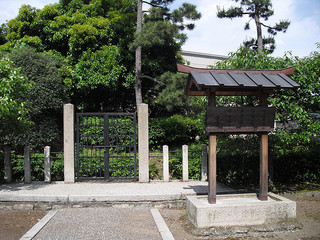Emperor Go-Hanazono
Emperor Go-Hanazono reigned from 1428-1464. His reign saw several major events in the history of the shogunate - including the murder of Shogun Ashikaga Yoshinori in 1441 by Akamatsu Mitsusuke - and several successions of shoguns.
He was the son of Imperial Prince Fushimi-no-miya Sadanari (Go-Sukô-in, a descendant of the Northern Court) and Fuseimon-in (daughter of Niwata Tsuneari). Though not directly of the lineage of Emperor Sukô, he came to be the imperial heir after Emperor Shôkô died without an heir in 1428/7. Emperor Shôkô had an older brother, Ikkyû Sôjun, but since Sôjun had been a Zen monk for many years, and since his mother was descended from the Southern Court, he was passed over for the succession.
Shortly after ascending to the throne, Go-Hanazono was taken on by Emperor Go-Komatsu as his adoptive nephew; Go-Komatsu served as his guardian. Go-Hanazono began ruling directly after Go-Komatsu died in 1433. The most notable event of his reign was the Eikyô Rebellion, a conflict between Kamakura Kubô Ashikaga Mochiuji and Kantô kanrei Uesugi Norizane.
The Kakitsu Incident of 1441/6 saw the murder of Shogun Ashikaga Yoshinori by Akamatsu Mitsusuke, which resulted in some dramatic changes in the power of the Imperial court.
Go-Hanazono is also famous for having reprimanded in 1461 Shogun Ashikaga Yoshimasa for focusing on the construction of a mountain villa during the height of a famine. He abdicated in favor of Emperor Go-Tsuchimikado in 1464/7, but held onto power as a Retired Emperor, until his death in 1471.
| Preceded by Emperor Shôkô |
Emperor of Japan 1428-1464 |
Succeeded by Emperor Go-Tsuchimikado |
References
- "Go-Hanazono Tennô." Asahi Nihon rekishi jinbutsu jiten 朝日日本歴史人物事典. Asahi Shinbunsha.
